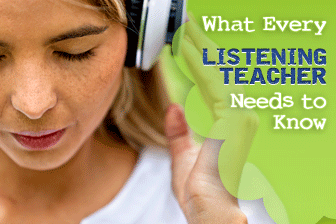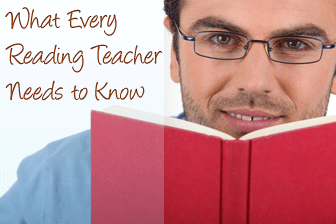What Every Listening Teacher Needs to Know


These BusyTeacher articles offer practical suggestions for the reading teacher who wants to engage his or her students and get them interested in the material you need to cover. More than that, you can have fun with reading, too. Here are some articles to encourage and inspire you for your next reading lesson.

If you are unsure where to start when presenting reading material to your students, this article will take you through each step of a reading lesson. The method can be used with whatever reading material you will be covering and serves as a great template for whatever material you have planned.
Do you ever find yourself wondering just what to do with material you either choose to cover in class or are required to cover in class? Here you will find 10 different activities you can apply to any of your ESL reading passages!
In these days of communicative ESL instruction, reading can be a tough subject to tackle. Thankfully, there are ways to teach reading that engage your students and keep them interested in class. Try these active reading strategies in your class and see just how communicative reading can be!
The ultimate point of ESL instructions is fluency in your students. Not only that, the most effective ESL classes are communicative in nature, that is, they get your students talking. Reading class can be a great source for discussion and expression for your ESL students. Here you will find the tips you need to successfully integrate discussion into reading class.
Reading is more than just starting at the beginning of a passage and slugging through to the end. Effective readers use different strategies depending on the material and ultimate goal of the reading exercise. This article will explain the different types of reading your students should be able to do and how to teach them.
What is the best part of reading a novel in class? Well, watching the movie, of course. However, there is no need to wait until after the last page before bringing the movie into the reading classroom. This article offers practical suggestions for integrating the movie into your reading instruction before, during and after reading the book.
Reading and writing are tied closely in any language learner, and ESL students are no exception. Give your students a chance to see what makes up good literature by analysis and discussion of other people’s stories. Then, encourage your students to apply that knowledge to their own. This article will show you how to do it.
Fables can be a great resource for the ESL teacher since they are often very short and easy to understand. When you want to bring some realia into the reading classroom, try a fable. This article will give you practical tips for understanding, using and writing fables with your second language students.
Every reading class has to cover different content, and all too often the teacher does not get to decide that content. When you do, though, bringing in some literature that is light and fun can benefit your class in more ways than one. Take your students on a “Once upon a time” travel by using fairytales in the classroom with these teacher-tested tips.
By integrating communicative strategies in your lessons and taking instruction step by step, you will find that your reading classes will be a great opportunity for your ESL students to improve their language use.